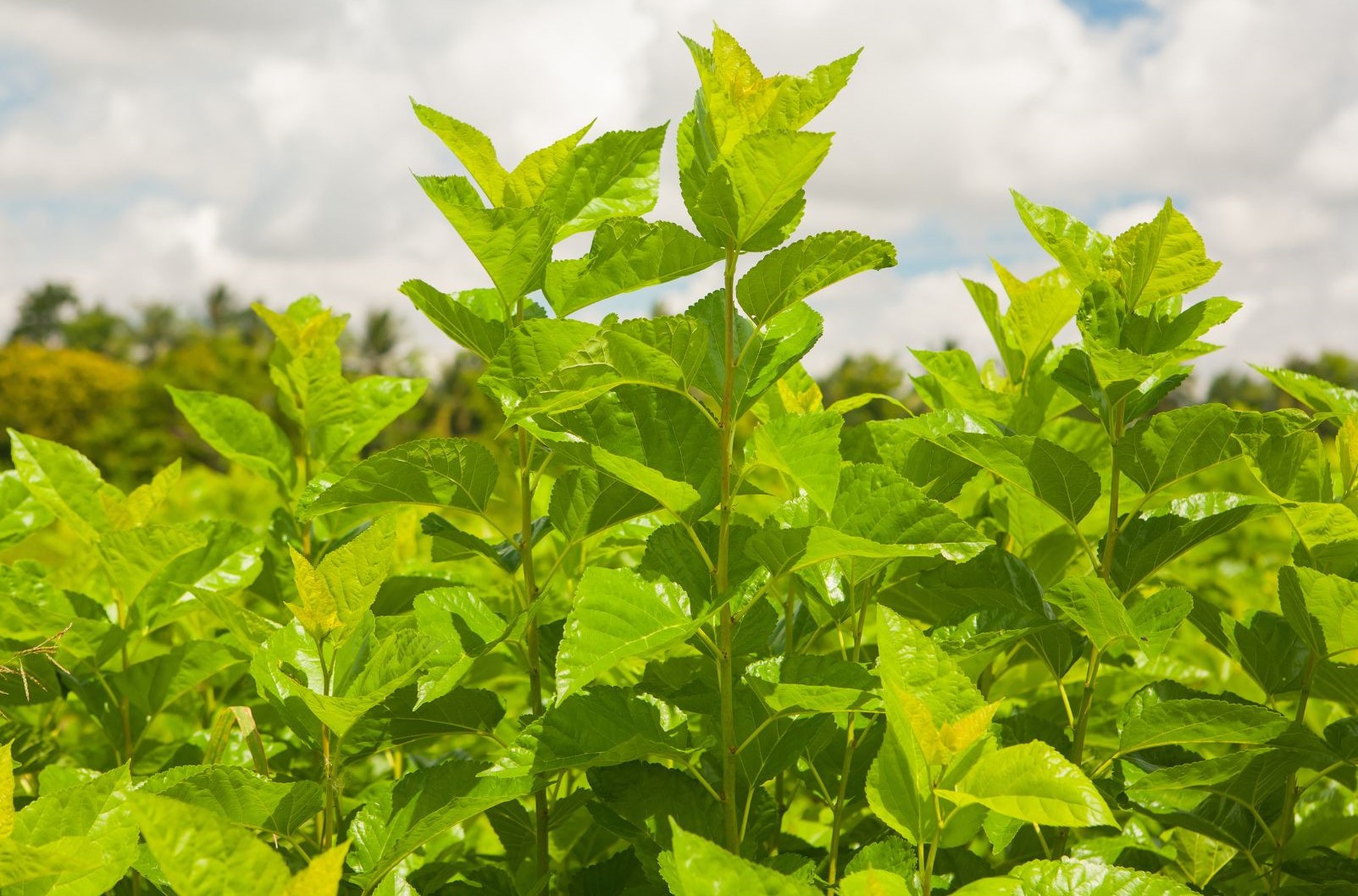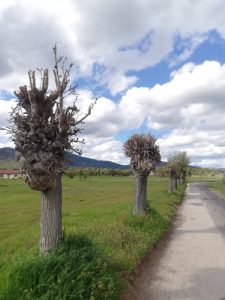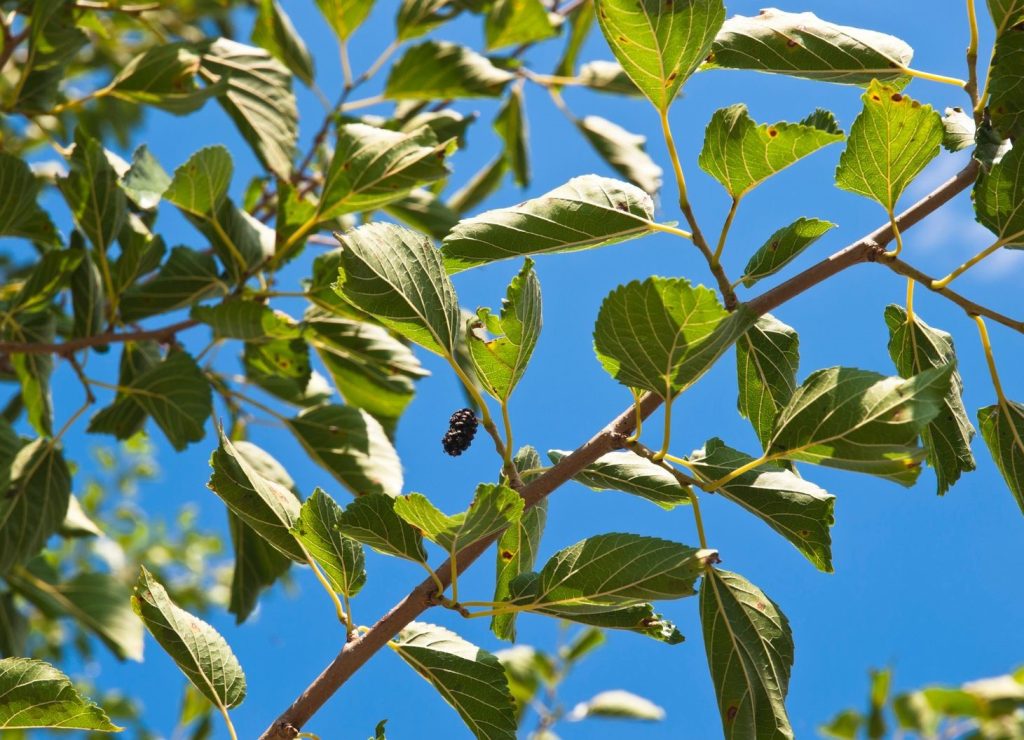Mulberry as a nutritious animal feed

This post is also available in:
This post is also available in:
![]() Ελληνικά (Greek)
Ελληνικά (Greek)
The leaves of the mulberry (Morus alba L.) are traditionally used to feed the silkworm (Bombyx mori L., Lepidoptera) (sericulture). The silkworm is a beneficial monophagous insect that, in the larval stage, feeds exclusively on mulberry leaves. In addition to sericulture, mulberry is used in many countries, mainly in East Asia, to feed farm animals. The high protein, good amino acid profile, mineral concentration, and good palatability make it an excellent feed, especially for small ruminants. Also, there is a lack of anti-nutritional factors found in other forage trees like Leucaena leucocephala and Azadirachta indica. Small ruminants (sheep, goats) preferentially consume the leaves and young shoots and then peel the older ones. Cows can also consume stem parts when they are crushed (4).
Figure: Nutritional characteristics of mulberry leaves.
 The high adaptability of the mulberry makes it possible to grow it in dry, wet, tropical, mountainous areas. However, it is not resistant to extreme drought. Mulberry adapts to soils with a wide range of granulometric compositions but prefers loamy, slightly acidic (6.2 – 6.8 pH), flat, deep, and well-drained fields. Cultivation requires fertilization as elements are removed by cutting the green parts. The key factor is nitrogen which favors vegetative growth, so 300-400 kg N / hectare is required. Meeting the needs can be done by incorporating manure but in a large amount (>10 tn / hectare). In most cases, the installation of the cultivation is done with cuttings, while the seed is also a choice.
The high adaptability of the mulberry makes it possible to grow it in dry, wet, tropical, mountainous areas. However, it is not resistant to extreme drought. Mulberry adapts to soils with a wide range of granulometric compositions but prefers loamy, slightly acidic (6.2 – 6.8 pH), flat, deep, and well-drained fields. Cultivation requires fertilization as elements are removed by cutting the green parts. The key factor is nitrogen which favors vegetative growth, so 300-400 kg N / hectare is required. Meeting the needs can be done by incorporating manure but in a large amount (>10 tn / hectare). In most cases, the installation of the cultivation is done with cuttings, while the seed is also a choice.
The mulberry orchards for animal feed have two directions.
Cutting shoots for use as animal fodder or direct grazing in the field. If the crop is intended for grazing, planting is done 3-5 m between rows and 3 m within the row and plants 800-1400 / hectare (5)(6). In the early stages, weed control is necessary before grazing begins. Between the rows, a legume such as the white clover (Trifolium repens L.) can be sown, which will provide the possibility for grazing in the winter in the specific plot of land. Also, the creation of orchards manages the lack of meadows at certain times of the year, such as in the Mediterranean regions, where summers are dry and green vegetation is limited. Cultivation requires irrigation where rainfall is unevenly distributed or insufficient.
In orchards for cutting leaves, the installation can be done densely. The plant density can be 2,200 trees/hectare and reach 30,000 trees/hectare if the planting distances reach 60 cm x 60 cm! However, this installation is of short rotation period and needs uninstallation. Leaf-cutting can be done every 5-8 weeks. Early cutting may yield lower dry matter and stunt plant growth, while late cutting reduces the leaf/shoot ratio and reduces protein concentration (7). Farmers can cut the shoots with portable equipment such as shears, saws, electric shears, and small chainsaws. Mechanical harvesting has also been developed. The cut shoots are given directly to animals for consumption or dried in the sun for preservation, as is done with hay. The parts of the stems are preferable to go through crushing (conditioning) so that the moisture will drop faster. Studies report yields of up to 40 tons of green leaves or 10 tons of dry matter. Silage has also been tested successfully (8). Finally, mulberry planting can make use of areas with little arable value. Such areas are sloping, rocky fields, parts around agricultural buildings, sides of farm roads, and borders of fields.

References
(1) https://euraf.isa.utl.pt/files/pub/leaflet_43.pdf
(2) http://repiica.iica.int/docs/B4187i/B4187i.pdf
(3) https://www.pashudhanpraharee.com/mulberry-as-an-alternate-feed-for-livestock/
(4) https://www.fao.org/3/x3770t/x3770t05.htm
(5) https://www.fao.org/3/x9895E/x9895e0n.htm









































































